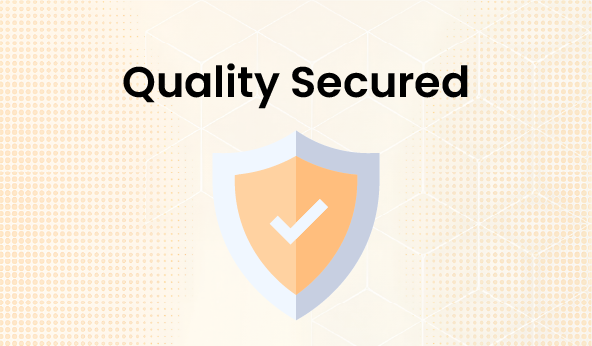Assuring the Best: Top 7 Strategies for Quality Assurance and Accreditation in Education
General
Overview
Achieving accreditation in education and guaranteeing quality have become crucial imperatives given the current higher education space. More than 90% of recognized universities report better graduation rates and increased student satisfaction. Taking a look at these astounding statistics shows that quality assurance is more than just a catchphrase; it's an essential part of succeeding in school. The top 7 tactics that can help organizations improve their quality control procedures and obtain accreditation—thereby opening the door to both academic success and institutional expansion—will be discussed in this blog. These insights will provide you, as a stakeholder, educator, or administrator, with the means to cultivate a flourishing learning environment in the long run.
Proven Methods: 7 Strategies for Quality Assurance and Accreditation in HEIs

Strategy 1: Establish Clear Objectives and Outcomes
To begin, let's discuss the fundamentals of high-quality education: well-defined goals and objectives. It sounds chaotic to go on a journey without knowing where you are going, likewise, in regard to education. Establish your learning objectives and goals before anything else. By the time the course ends, what do you expect the students to have accomplished? Clearly state what you mean! Everyone is aware of the goal in this manner.
Next, make sure your curriculum reflects these goals. Consider it a kind of road map. Your curriculum needs to direct students toward the objectives you've established. This helps to guarantee consistency and facilitates success measurement.
Strategy 2: Regular Faculty Development
Maintaining your faculty's professional growth and ongoing training is revolutionary. Your staff will always be up to date on the newest technologies, instructional techniques, and business trends if you engage in regular faculty development. Urge your faculty members to experiment with cutting-edge pedagogy. Encouraging innovation keeps things interesting and novel, whether it's through the use of cutting-edge technology, classroom flipping, or immersion learning. Not only does faculty development improve the quality of instruction, but it also gives your team the tools they need to motivate and successfully mentor their students until they drop out.
Strategy 3: Comprehensive Student Assessment
The next and third tactic is to find out how we can improve students' learning through assessment, such as through projects, presentations, and a lot more. 72% of instructors believe that these diverse approaches are far more beneficial than examinations, according to a recent poll. Regular feedback also aids students in staying on course and continuing to advance. For ensuring that our programs are of the highest caliber and that we are truly getting the best out of our students, it is a game-changer. So catch this strategy. This is a must-have!
Strategy 4: Curriculum Review and Improvement
Regular curriculum evaluation is essential for all kinds of accreditation processes. Reviewing your programs on a regular basis keeps us abreast of current developments in the field and new research. The students are prepared and interested because we are always upgrading and developing. It's compulsory that you make it a routine to update your programs so that they can consistently provide excellent instruction.
Strategy 5: Robust Institutional Governance
Put your attention on creating efficient leadership and management structures in order to provide a solid basis for college accreditation and quality assurance. This entails defining roles and duties precisely at every level inside the organization. Ensuring that choices are made in an open and well-documented manner is essential to ensuring that everyone is aware of the "why" behind the decisions! Robust governance not only promotes confidence among stakeholders but also serves as evidence to accrediting agencies that your HEI is well-run and dedicated to ongoing development and is never static.
Strategy 6: Stakeholder Involvement
A successful quality assurance and college accreditation process depends on having everyone on board. Involve your troupe - this betters your whole accreditation performance. It could be your staff, faculty, parents, the community at large, and students in the development of your educational programs to make sure they fit the demands and expectations of the real world. Remember the importance of working with industry partners as well! Their advice helps ensure that your programs remain successful, up, and relevant by helping you match your curriculum with the demands of the labor market and current developments.
Strategy 7: Use of Technology and Data Analytics
In terms of quality assurance, technology and data analytics are revolutionary. According to a recent survey, performance increased significantly for 68% of the institutions utilizing sophisticated analytics. You may monitor development, evaluate results, and expedite procedures by utilizing these tools! It all trickles down to making more informed judgments and demonstrating your commitment to continuous development.
Elevate Your Standards – Embrace Effective Quality Assurance and College Accreditation Strategies
Are you prepared to advance the college accreditation and quality assurance of your organization? You can maintain your leadership position in education and assure quality instruction by putting these best practices into practice and utilizing cutting-edge accreditation and institutional effectiveness solutions like Creatrix Campus. Give these tactics top priority and see how Creatrix Campus may assist you in boosting your accreditation performance!
Want to contribute?
We welcome thought leaders to share ideas and write for our blog.
Become a Guest Author →
